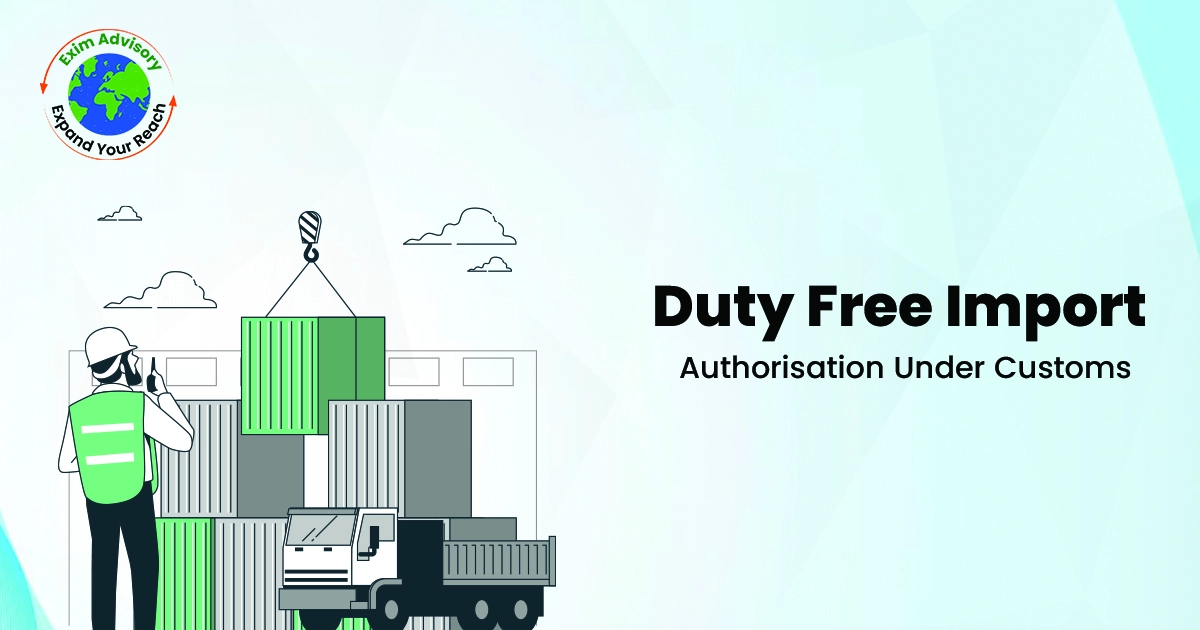Import duties act as a significant revenue source for the government and also protect the domestic industry. However, in certain peculiar situations, these import duties can act as an obstacle for certain and businessmen. In such cases, the removal or concession in import duty becomes important, especially when the goods are meant for export. This ensures that Indian goods remain competitive in the international markets.
The government does allow refund of import duties on the goods if such goods are meant for export or consumption in the manufacture of the export goods. However, it leads to blockage of capital as import duties have to be paid and then claimed as duty drawback. That’s where the Duty-Free Import Authorisation comes into the picture.
What is Duty Free Import Authorisation (DFIA)?
Duty Free Import Authorisation (DFIA) is a scheme whereby the import of goods is allowed on a duty-free basis that is required for the production of the export goods. The following are the eligibility criteria for Duty Free Import Authorisation:
- DFIA recognition shall be allowed only on a post export basis and for the goods for which the Standard Input Output Norms (SION) have been determined.
- The application for Duty Free Import Authorisation shall be filed with the concerned Regional Authority before the goods are exported.
- Merchant exporters are required to mention their address and name of the supporting manufacturer of the export goods on the documents for export like ARE-1, shipping bill, ARE-3, bill of export, airway bill etc.
Further, it is mandatory to achieve a value addition of a minimum of 20% for DFIA. However, the Appendix 4C of the Advance Authorisation specifies certain items that require a higher value addition to participate in the Duty-Free Advance Authorisation Scheme.
Duties Exempted Under DFIA Registration
Following duties have been granted exemption under DFIA:
- The DFIA shall grant exemption only against the payment of Basic Customs Duty (BCD)
- The drawback should be available based on the rate as determined and fixed by the customs authority on the inputs on which duty was paid and were used in exports. However, if the inputs are not specified in the SION, the applicant needs to clearly indicate the details of such duty paid inputs in the application for Duty Free Import Authorisation.
Procedure for Duty Free Import Authorisation
Here’s the procedure to apply for Duty Free Import Authorisation:
- The applicant should file an application to the regional authority before commencing export under the Duty-Free Import Authorisation Scheme. Upon submission of the application, a file number should be generated.
- The export should be completed within a period of 12 months from the date of filing the online application under the Duty-Free Import Authorisation.
- The applicant shall mention the file number on the export documents like ARE-1, shipping bill, ARE-3, bill of export, airway bill etc. while exporting the products.
- The applicant is permitted to request the issue of transferable Duty-Free Import Authorisation to the concerned regional authority upon completion of the exports and realisation of the export proceeds. The request should be done within a period of 12 months from the date of export or within a period of 6 months from the date of realisation of export proceeds, whichever is later.
- Separate Duty-Free Import Authorisation (DFIA) should be issued for each port and each SION.
- The export under Duty Free Import Authorisation should be made from a single port. Also, the DFIA should not be issued for the export of products where the SION prescribes the Actual User condition for any input.
- The Duty-Free Import Authorisation should be valid for a period of 12 months from the date of issue.
Must Check "BRAND RATE FIXATION FOR DUTY DRAWBACK UNDER CUSTOMS"
Split Authorisation Under DFIA
Split authorisation under DFIA can also be issued upon request subject to a minimum CIF value of Rs. 10 lakhs each and multiple thereof. The applicant is required to pay a fee of Rs. 1000 for each split authorisation. The Split authorisation under DFIA should be permitted with the same port of registration as is appearing on the original DFIA.
In a Nutshell
Duty Free Import Authorisation Scheme was launched as a variant of the Advance Authorisation Scheme. Further, it also requires a higher minimum value addition of 20% as compared to the earlier scheme. However, opting for the DFIA scheme allows you to save a lot in terms of import duties, which otherwise would have to be claimed as duty drawback, leading to unnecessary blocking of capital. In case you are also willing to apply for Duty Free Import Authorisation Scheme (DFIA Registration), feel free to contact the Exim Advisory.
